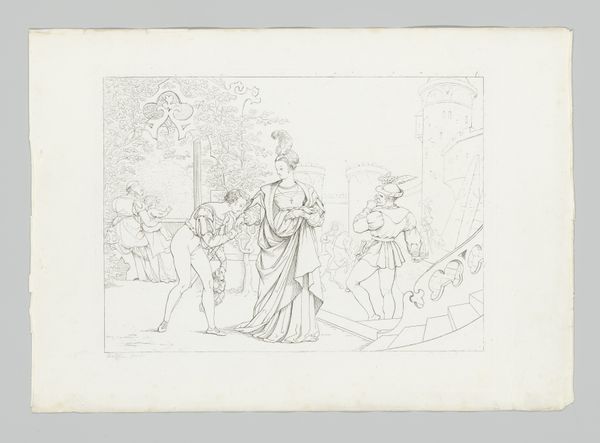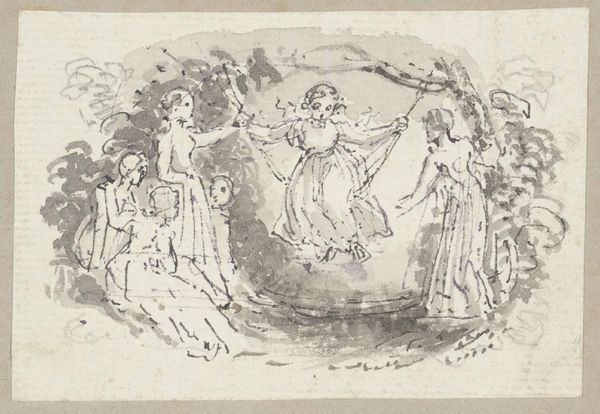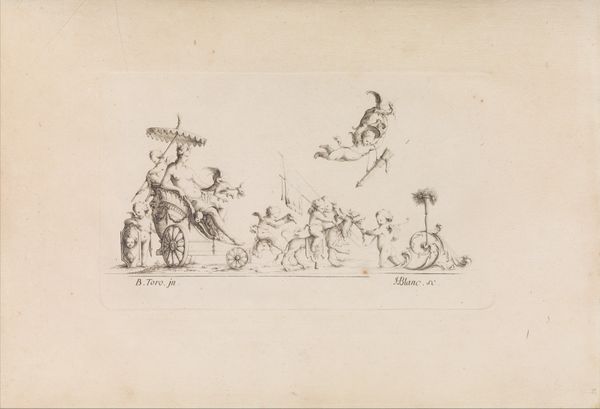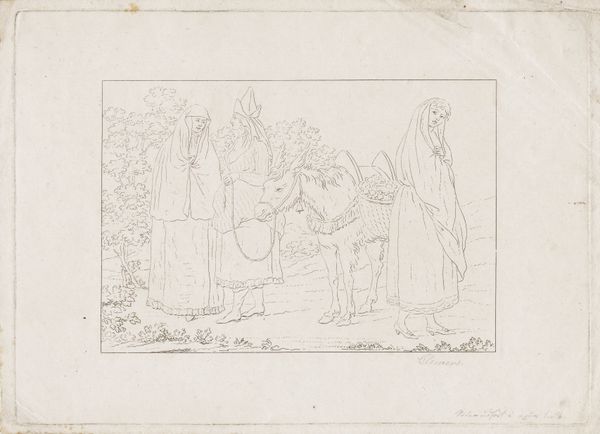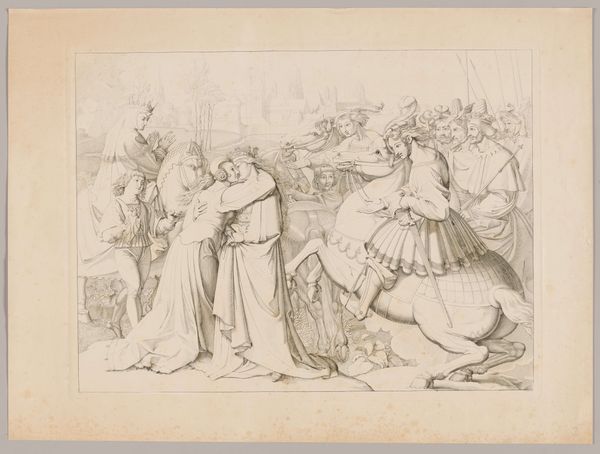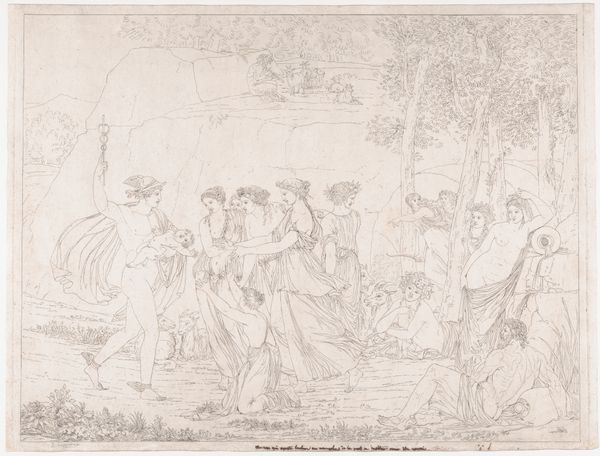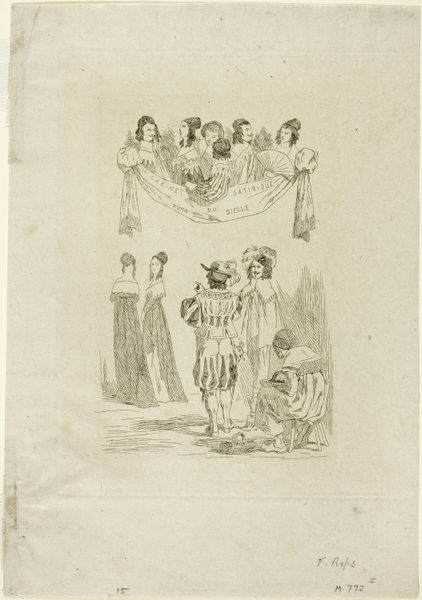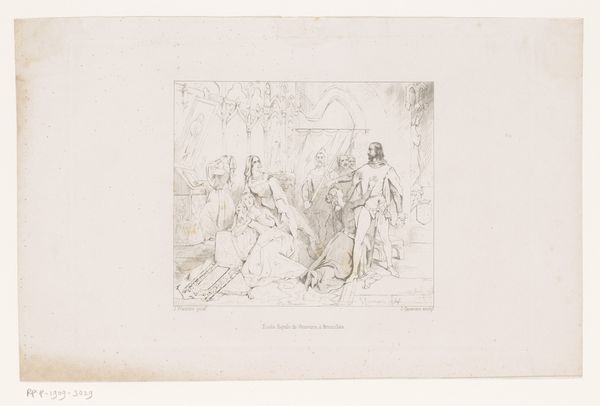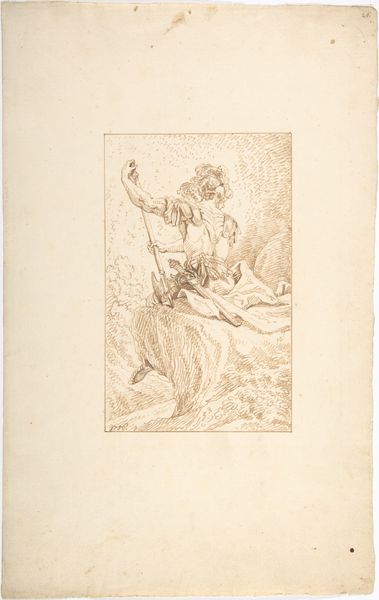
drawing, print, etching, paper, ink
#
drawing
#
narrative-art
# print
#
etching
#
figuration
#
paper
#
ink
#
romanticism
Dimensions: 210 mm (height) x 281 mm (width) (bladmaal), 195 mm (height) x 271 mm (width) (plademaal), 130 mm (height) x 186 mm (width) (billedmaal)
Curator: At first glance, I feel like I’m seeing some joyful revelry with figures raising their arms as if dancing in some shared ecstasy. It feels liberating, even celebratory. Editor: Indeed. What we have here is “Illustration efter Murphy: Travels in Portugal," an etching with ink on paper dating from 1748-1831, after a drawing by J.F. Clemens. It now resides at the SMK, the National Gallery of Denmark. Curator: The energy reminds me of a maypole dance or some kind of harvest festival, where gestures lift towards the sky in thanks. I immediately wonder: what exactly are they celebrating? And is there something ritualistic or ceremonial in their movement? Editor: I can certainly sense a potent mixture of social observation and cultural documentation. Portugal during this time, as viewed through outside eyes like Murphy's, was ripe for Romantic-era exoticization, with depictions that explored "quaint" local customs and folklore. Curator: This makes me ponder what this form of visual transcription might capture or perhaps misconstrue. The wizened, observing figures on the periphery offer such a potent, contrasting view of the dancers; it reminds me of age, memory, and perhaps tradition looking onto a moment of spirited youth and fleeting joy. Editor: Look closer at the symbolic contrast in how the figures are rendered: these onlookers almost melt into the earth, whereas the dancers pop with gestural vivacity. Perhaps they’re meant to evoke feelings around ephemeral youth set against an unmoving, historical landscape. Their celebration, after all, might be a tiny blip in the scope of the observing elders’ timeline. Curator: Oh, absolutely. It lends this fleeting snapshot of life a particular emotional richness—both joy and reflection meet, a dynamic tension for our attention. This contrast adds layers, doesn’t it? Editor: Precisely. It's a testament to Clemens' skill to imbue a relatively simple illustration with so much interpretive potential. These seemingly straightforward lines capture something profoundly evocative.
Comments
No comments
Be the first to comment and join the conversation on the ultimate creative platform.
